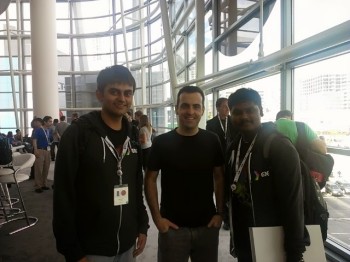
Remember the name: Xiaomi and Micromax are aiming for world domination
When I woke up on Thursday, I had a rather gleeful message from a friend awaiting me on Hangouts.
“Hugo leaves google. I told ya.”
He did, over three months ago right after the keynote at Google I/O. As you would have probably guessed, the Hugo in question here is Hugo Barra, who resigned this past week from his position as VP of Project Management for Android. Apparently, my friend was tipped that Hugo was looking to leave ever since Andy Rubin stood down earlier this year, but never ran with the story since he wasn’t able to verify it.
I quickly searched for the details on his departure. Most of it (i.e., the love quadrangle part) read like something you would expect on Gawker, but what surprised me the most was that he was leaving for Xiaomi. While I had heard of the company, my impression of them was that of another low-cost Chinese phone manufacturer.
I couldn’t quite figure out why a top Google executive, and a public face of Android, would make such a career move. After a bit of research, I felt embarrassed for having been so ignorant.
Home-court Advantage
Reading about Xiaomi’s rapid rise, I couldn’t help but draw comparisons with Micromax, a low-cost Indian phone manufacturer that entered the space in 2008. China and India are complicated markets, particularly for foreign companies. Success is dependent a a very wide-ranging set of factors, such as support of local languages, content packages designed for the region, and (from my experience in India) software gimmicks that make for a great demo.
The biggest factor, however, is cost. If two devices promise a similar feature set, the consumer would typically go for the one that costs less. Brand value does play a role, but it is limited. Both Micromax and Xiaomi understand their markets better than anyone else, and within India and China respectively, are up there at the top with Samsung and Apple in terms of market share.
Different Approaches
Despite their similarities, both the companies have a very different approach starting up. Micromax was founded way back in 1991, dealing as a reseller of IT equipment with forays into other fields including software development and embedded systems. The story is similar to many of the technology startups from the 80s and early 90s era of India, with other notable corporations like Wipro and HCL taking a similar approach.
It wasn’t until 2008 that Micromax entered the mobile market, initially focussing on feature phones. 2011 was a tipping point in terms of smartphone adoption in the country with the launch of 3G services in the country (with video calling taking a very prominent place in the advertising). What Micromax did particularly well in this time was that they studied what Samsung had to offer, and attempted to offer a similar list of features within 6 months. When the Galaxy Note did well, with many clamoring for the stylus, they got their Canvas device ready. Samsung’s offering Air Gestures? No problem, they’ve got it too. In many ways, they would neutralize Samsung’s “advantages” and beat them with a price that was typically half, if not less.
Xiaomi’s story is significantly different. They were founded in 2010 and already had a pretty star-studded team prior to bringing Hugo Barra on board. Lei Jun, the CEO and Co-founder, apparently models himself after Steve Jobs, and wants Xiaomi to be China’s answer to Apple. However, if you examine the way Xiaomi works, there are very few similarities (if at all) between the two companies.
Xiaomi’s most popular product aren’t their phones, but their MIUI software, in the form of ROMs as well as custom launchers and lockscreens, all famous for their. If the Apple Store has been key for Apple’s success, Xiaomi’s has been the fact that they don’t have a single physical store: they sell their devices (at cost) via the internet, including an experiment in December of last year where they sold 50,000 devices in 5 minutes via the social networking site Sina Weibo.
How do they make money? By focussing on the eco-system around their devices. Their app store crossed a billion downloads earlier today, and they also sell various accessories that are highly popular.
Taking on the big guys
According to IDC’s report published last week, Micromax is closing in on Samsung for the market share (over a quarter of it now) in the country. One of the major reasons for it is the popularity of phablets. Believe me when I say this: Indians love big screens. On multiple instances I have been asked if my Samsung Galaxy Tab 10.1 could make calls.
Xiaomi’s market valuation is currently at a staggering $10 billion, equal to that of Lenovo’s and double of Blackberry’s. And this is just three years after the company was founded. To put it in perspective, Facebook was worth round about the same on their third birthday. It’s not common for an Asian startup to do that well. Xiaomi’s revenues are also exponentially growing, having made more than double their 2012 revenues in the first half of this year alone, a period in which their Mi2s was the highest selling device in the country, beating the Galaxy S4.
The Future
Once again, the approach both companies are taking for their global expansion is significantly different. Micromax is focussing on a few emerging markets at a time, consolidating in Asian territories like the UAE. Xiaomi, on the other hand, wants to go truly global or at least that is the message they have sent by bringing Hugo Barra on board. Whether they can replicate their success is something that we will see over time.